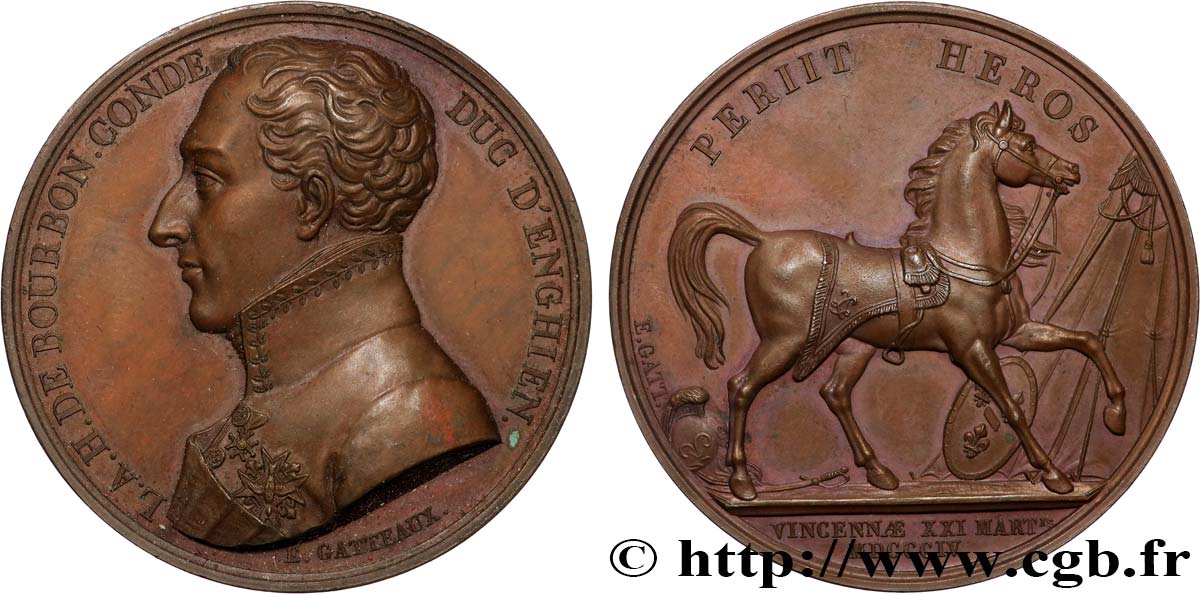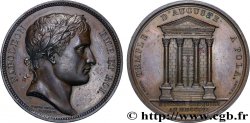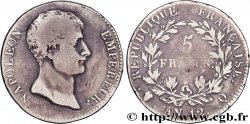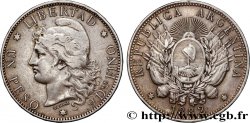Live auction - fme_885474 - NAPOLEON'S EMPIRE Médaille, Mort du Duc d’Enghien, Louis-Antoine-Henri de Bourbon-Condé
Чтобы принять участие в торгах, вы должны войти в систему и стать подтвержденным участником аукциона. Войдите, чтобы сделать ставку. Ваш аккаунт будет подтвержден в течение 48 часов. Не ждите до закрытия торгов, чтобы зарегистрироваться.Сделав ставку на данный товар, вы вступаете в юридическое соглашение на покупку выбранного товара и нажатием кнопки «Сделать ставку» подтверждаете принятие вами условий интернет-аукционов cgb.fr.
Ставка может бить сделана только в полном эквиваленте евро. Торги закроются согласно времени, указанному в описании товара, все ставки, сделанные после закрытия торгов, учитываться не будут. Не следует откладывать предложение вашей ставки до последнего момента, так как система может не успеть обработать вашу заявку, и ваша ставка не будет принята. Более детальную информацию вы найдёте здесь: FAQ по интернет-аукционам.
Все ставки победителей подлежат комиссии 18%.
Все ставки победителей подлежат комиссии 18%.
| Оценить : | 120 € |
| Цена : | 77 € |
| Максимальная предлагаемая цена : | 81 € |
| Конец торгов : | 13 February 2024 16:02:58 |
| Участников : | 2 Участников |
Тип Médaille, Mort du Duc d’Enghien, Louis-Antoine-Henri de Bourbon-Condé
Дата: 1804
Металл: copper
Диаметр: 40,5 mm
Ориентация осей монеты: 12 h.
Гравер GATTEAUX Jacques-Édouard (1788-1881)
Вес: 35,89 g.
Век: lisse
Пуансон: sans poinçon
Комментарии о состоянии
Très jolie patine marron présentant quelques traces de manipulation et une tache d’oxydation à l’avers
Ссылки в каталоге: :
Лицевая сторона
Аверс: легенда: L. A. H. DE BOURBON. CONDE - DUC D’ENGHEIN..
Аверс: описание: Buste décoré à gauche du duc d’Enghien, signé : GATTEAUX.
Обратная сторона
Реверс: легенда: PERIIT HEROS // À L’EXERGUE : VINCENNAE XXI MART.IS / MDCCCCIV.
Реверс: Описание: Cheval à droite, près d’une tente d’armée ; un écu aux armes de France à ses pieds. Signé : E. GATT..
Комментарий
Cet exemplaire présente une inversion des lettres dans le mot ENGHEIN au lieu de ENGHIEN.
Louis-Antoine-Henri de Bourbon-Condé (Chantilly, 1772 – Vincennes, 21 mars 1804) est un prince du sang français. Il est le 10e et dernier duc d'Enghien.
Fils unique de Louis, dernier prince de Condé et de Louise-Marie-Thérèse-Bathilde d'Orléans, il est le dernier descendant de la Maison de Condé.
Après un début d'union romanesque, ses parents se séparent en 1781. Sa mère est confinée au château de Chantilly.
Dès 1789, quelques jours après la prise de la Bastille et devant les troubles révolutionnaires, le jeune duc d'Enghien, âgé de 17 ans, rejoint l'Armée des émigrés qui se forme outre-Rhin sous le commandement de son grand-père, le prince de Condé et de son père, le duc de Bourbon. Le but de cette armée est de marcher sur la France pour restaurer l'Ancien Régime.
En 1792, le duc d'Enghien prend la tête de l'auto-proclamée Armée royale française. Cette dernière s'engage dans la tentative d'invasion (avortée) de la France aux côtés des armées alliées autrichienne et prussienne réunies sous le commandement du duc Charles-Guillaume Ferdinand de Brunswick. Néanmoins, Le 2 février 1794, il reçoit des mains du comte de Provence la Croix de Saint-Louis pour son comportement valeureux dans l'armée de Condé.
Il se réfugie à Ettenheim, dans le margraviat de Bade, à quelques lieues de la frontière française.
Ses projets de mariage avec la princesse Caroline de Bade ayant été contrariés par le margrave Charles-Frédéric, il vit ouvertement avec la femme de sa vie, Charlotte de Rohan-Rochefort.Napoléon Bonaparte, Premier Consul de France, le soupçonne d'être à l'origine d'un nouveau complot royaliste en compagnie de Dumouriez, à la suite d'une perquisition chez Armand de Chateaubriand (le cousin de François-René de Chateaubriand) qui fut fusillé plus tard. Il le fait enlever par une troupe de soldats menés par le général Ordener dans la nuit du 15 au 16 mars 1804.
Bonaparte ne tarde pas à découvrir la vérité, grâce à des papiers saisis par les membres de l'opération, prouvant que le duc d'Enghien porte les armes contre la République et envoie des assassins, par le biais de l'Angleterre, contre la personne du premier consul. Le duc est presque immédiatement traduit devant un conseil de guerre présidé par Pierre-Augustin Hulin. Après un simulacre de jugement, il est condamné à mort et fusillé dans les fossés du château de Vincennes le 21 mars 1804. Son corps est jeté dans une tombe creusée à l'avance au pied du pavillon de la Reine.
.
Louis-Antoine-Henri de Bourbon-Condé (Chantilly, 1772 – Vincennes, 21 mars 1804) est un prince du sang français. Il est le 10e et dernier duc d'Enghien.
Fils unique de Louis, dernier prince de Condé et de Louise-Marie-Thérèse-Bathilde d'Orléans, il est le dernier descendant de la Maison de Condé.
Après un début d'union romanesque, ses parents se séparent en 1781. Sa mère est confinée au château de Chantilly.
Dès 1789, quelques jours après la prise de la Bastille et devant les troubles révolutionnaires, le jeune duc d'Enghien, âgé de 17 ans, rejoint l'Armée des émigrés qui se forme outre-Rhin sous le commandement de son grand-père, le prince de Condé et de son père, le duc de Bourbon. Le but de cette armée est de marcher sur la France pour restaurer l'Ancien Régime.
En 1792, le duc d'Enghien prend la tête de l'auto-proclamée Armée royale française. Cette dernière s'engage dans la tentative d'invasion (avortée) de la France aux côtés des armées alliées autrichienne et prussienne réunies sous le commandement du duc Charles-Guillaume Ferdinand de Brunswick. Néanmoins, Le 2 février 1794, il reçoit des mains du comte de Provence la Croix de Saint-Louis pour son comportement valeureux dans l'armée de Condé.
Il se réfugie à Ettenheim, dans le margraviat de Bade, à quelques lieues de la frontière française.
Ses projets de mariage avec la princesse Caroline de Bade ayant été contrariés par le margrave Charles-Frédéric, il vit ouvertement avec la femme de sa vie, Charlotte de Rohan-Rochefort.Napoléon Bonaparte, Premier Consul de France, le soupçonne d'être à l'origine d'un nouveau complot royaliste en compagnie de Dumouriez, à la suite d'une perquisition chez Armand de Chateaubriand (le cousin de François-René de Chateaubriand) qui fut fusillé plus tard. Il le fait enlever par une troupe de soldats menés par le général Ordener dans la nuit du 15 au 16 mars 1804.
Bonaparte ne tarde pas à découvrir la vérité, grâce à des papiers saisis par les membres de l'opération, prouvant que le duc d'Enghien porte les armes contre la République et envoie des assassins, par le biais de l'Angleterre, contre la personne du premier consul. Le duc est presque immédiatement traduit devant un conseil de guerre présidé par Pierre-Augustin Hulin. Après un simulacre de jugement, il est condamné à mort et fusillé dans les fossés du château de Vincennes le 21 mars 1804. Son corps est jeté dans une tombe creusée à l'avance au pied du pavillon de la Reine.
.








 Cообщить об ошибке
Cообщить об ошибке Распечатать страницу
Распечатать страницу Отправить мой выбор
Отправить мой выбор Задать вопрос
Задать вопрос Consign / sell
Consign / sell
 Информация
Информация















